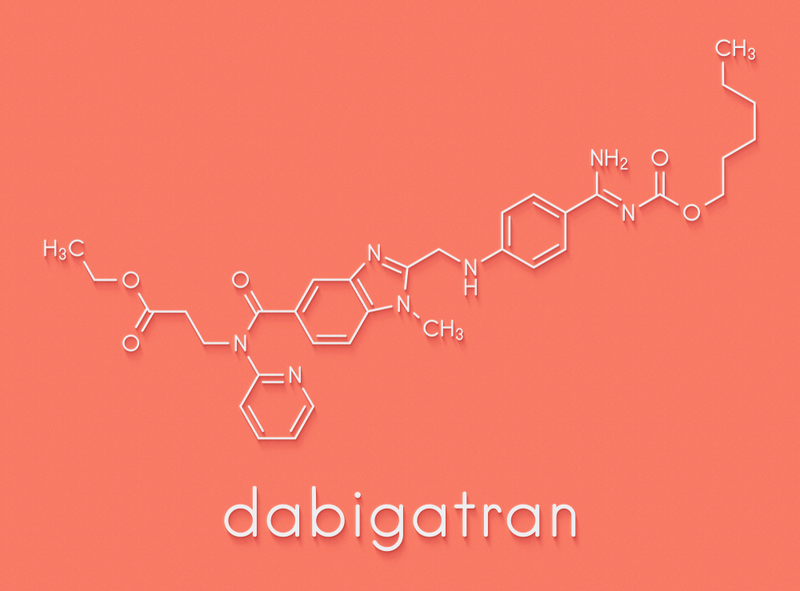Study identifies optimal blood thinners for bone health: JACC
CardioSmart Nov 02, 2019
The study found that direct oral anticoagulants like dabigatran carry a lower risk of broken bones and may be a preferable treatment for elderly adults with an irregular heart rhythm.

Newer blood thinners may carry a lower risk for broken bones in elderly adults with abnormal heart rhythm. With multiple blood thinners now on the market, elderly patients may want to avoid warfarin for the treatment of AFib, based on a recent study that compared risk of brittle and broken bones among patients on different types of blood thinners.
Published in the Journal of the American College of Cardiology, this study compared bone fractures among more than 37,000 older adults taking blood thinners for atrial fibrillation. The goal was to see whether the type of blood thinner affects patients’ risk for osteoporosis and broken bones, which is common in older adults.
Atrial fibrillation, often referred to as AFib, is an irregular and often rapid heart rhythm that increases risk of stroke. AFib is especially common in elderly adults and requires blood thinners to help reduce risk of heart events.
The recent study included 37,350 adults in a Danish health registry, which tracks hospital admissions and prescription refills among citizens. All participants had AFib and took blood thinners for at least 6 months between 2013 and 2017. The average age was around 72.
Based on prescription data, one-third of participants were taking vitamin K antagonists (VKAs) like warfarin, which have been around for decades. The rest of the participants took direct oral anticoagulants (DOACs), which includes newer drugs like dabigatran, rivaroxaban, apixaban and edoxaban.
Both types of blood thinners help prevent clots and reduce of stroke. However, warfarin is known to affect bone density, while DOACs are not.
After tracking participants for two years, researchers found that patients on DOACs had 15% lower risk of broken bones than those taking a VKA. Patients taking DOACs were also 18% less likely to be taking medication for osteoporosis, which occurs when the bones become weak and brittle.
However, experts urge caution in applying these findings to real-world decisions about blood thinner use. That’s because the overall risk of broken bones in the study was very low, affecting only 3.1–3.8% of all study participants. Therefore, changing blood thinners in older patients with AFib would likely have little impact on outcomes in the general population.
As a result, experts note that the bone-density effects of blood thinners are most relevant to those at high risk, meaning patients with a history of broken bones from osteoporosis. In these high-risk patients, choosing DOACs over warfarin may be helpful for reducing risk of side effects. For patients with no history of broken bones, however, decisions about blood thinners will likely remain unchanged. In these low-risk cases, experts note that blood thinner choice should continue to depend on key factors like stroke risk, monitoring, affordability and patient preference.
Questions for you to consider
Q: What is a blood thinner?
A: A blood thinner slows down the blood's ability to form clots. This helps prevent clots that can cause life-threatening problems such as stroke, heart attack and pulmonary embolism. These medicines also can keep blood clots from getting bigger. Blood thinner medicines work in different ways to prevent blood clots, but all of them raise the risk of serious bleeding.
Q: How is atrial fibrillation treated?
A: In general, the goals of atrial fibrillation treatment are to promote a regular heart rhythm or rate and prevent blood clots, which can cause stroke. However, treatment strategies depend on the unique needs of each patient. Treatment options may include antiarrhythmic medication, blood thinners, and a variety of procedures that can help control atrial fibrillation.
-
Exclusive Write-ups & Webinars by KOLs
-
Daily Quiz by specialty
-
Paid Market Research Surveys
-
Case discussions, News & Journals' summaries